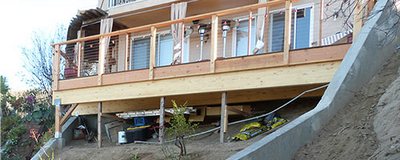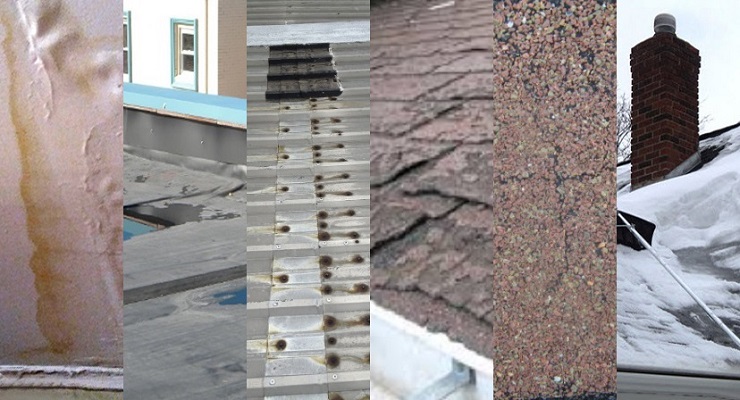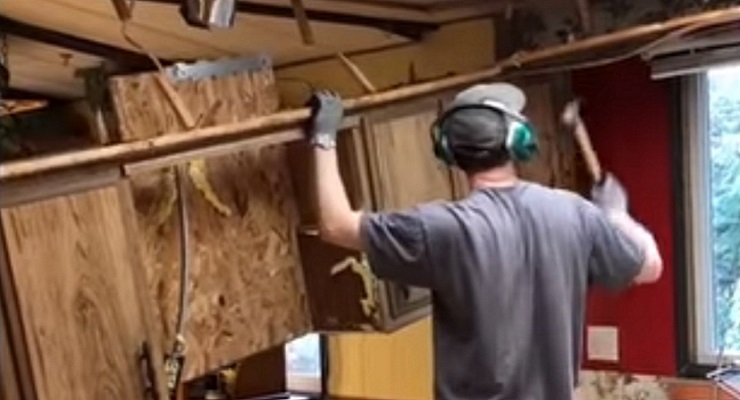You Know What’s Coming. But Are You Ready?
El Niño and an almost certainly soon earthquake mean it’s time to be prepared
Wednesday, November 11, 2015
Southern Californians can now officially predict the future—at least about things. First: we’re going to have an earthquake, and it’s going to be big. Second: El Niño is on its way, and it’s going to be big.
So now what? We went in search of an expert to tell us how to get ready.
Locals will remember, during the 1994 Northridge quake, countless television scenes of apartment building with garages underneath collapsing, smashing rows and rows of parked cars.
As Max Oliva of Alpha Structural in Eagle Rock, explained, “These are apartments where they have ‘tuck under’ parking and that means that the first ground level story is soft. It’s not strong enough to support the sideways or lateral movement, and they’ve been prone to collapse or to structurally fail as seen in that 1994 quake.”
In fact, just over a month ago, Los Angeles Mayor Eric Garcetti and the City Council passed an ordinance that mandates the structural retrofitting of these properties, giving owners seven years to complete the retrofitting.
JPL’s recent report that Southern California is 99.999 percent likely to endure a major earthquake of 5.0 or greater within the next two years means it’s time for a lot of buildings to retrofit.
The basic idea behind retrofitting is simple, Oliva explained.
 “It means the adding of additional hardware to a building’s existing foundation system. So, you go underneath a home, you look at the existing setup and compare it to the ‘standard plan’ of the city you’re in,” he said. “And from there you can deduce what your proposal is going to be, and the amount of time it’s going to take and the work and hardware involved.”
“It means the adding of additional hardware to a building’s existing foundation system. So, you go underneath a home, you look at the existing setup and compare it to the ‘standard plan’ of the city you’re in,” he said. “And from there you can deduce what your proposal is going to be, and the amount of time it’s going to take and the work and hardware involved.”
Most locals are familiar with those angled heavy plates affixed to the front of retrofitted homes and buildings. As Oliva describes them, “Those are called the universal foundation plates. And the idea behind earthquake retrofitting is when the house starts shaking left to right, the house can actually shift off the foundation. So you add additional hardware to the framing of the house to the foundation to counter that movement. You want the whole house to shake as one and not to individually move and slip off the foundation.”
Interestingly enough, Alpha Structural’s own steel-reinforced concrete block building on Colorado Boulevard is probably the best demonstration of their work.
“We don’t really see many clients come to our property as much,” Oliva told Pasadena Now, “But most people who come in instantaneously notice the structural support we have in our own building. It stands out.”
And as Oliva points out, though everyone and their brother knows that an earthquake is coming, earthquake insurance is not something that’s normally covered under their homeowner policy.
 “It’s normally an additional thing that gets added on,” he said. “A lot of people don’t understand this. So earthquake retrofitting is a voluntary structural upgrade. There’s no mandate on it for homeowners whatever. But there are incentives. There’s different programs available for homeowners.
“It’s normally an additional thing that gets added on,” he said. “A lot of people don’t understand this. So earthquake retrofitting is a voluntary structural upgrade. There’s no mandate on it for homeowners whatever. But there are incentives. There’s different programs available for homeowners.
“We can help with government assisted programs to make it beneficial,” he continued. “There’s a program called Earthquake Brace and Bolts, and lots of homeowners in Los Angeles are taking advantage of that. That gives up to about $3,000 (towards retrofitting).”
But what about that El Niño thing?
“With the dry soil that we have over the drought, what happens is a lot of our soil is expansive. It’s just high in clay content. And during the drought, it tends to dry out and shrink,” Oliva explained. “With a rapid set of rains, it can expand. It’ll expand and not only that but there will be so much water it won’t be able to absorb into the soil fast enough. And this leads to mudslides.”
Oliva knows a lot about how mudslides work.
“So when we talk about up the 210, right through Pasadena, Altadena, up to Sunland-Tujunga, there are a lot of different canyons. And many of those canyons are already labeled at risk of mudslides,” he said.
 Especially in Pasadena, where there is history and grandeur, and river rock.
Especially in Pasadena, where there is history and grandeur, and river rock.
“Pasadena is a fantastic city,” Oliva emphasized. “There are historical homes.”
But Oliva said there are also many homes built upon unreinforced masonry foundations and river rock brick foundations.
“You can’t do an earthquake retrofit to a brick or river rock foundation, the way that you would to a concrete foundation,” he continued. “And when I say unreinforced, it’s just specifically there’s no reinforcing steel or rebar running through it, like there is in concrete. It’s simply rocks and mortar, or brick and mortar.”
“It’s really important for homeowners to understand that you can’t just do earthquake retrofit to those properties. We do a new foundation. We call it a sister foundation. And we do it along the inside of the foundation. For two reasons. One it’s cost effective for the homeowner because we’re not removing and demoing their existing foundation. We’re just pouring a new one on the inside,” Oliva explained.
So the home keeps its look and keeps itself upright when the shaking begins.
And when the shaking does begin, the safest place in Southern California just might be the offices of Alpha Structural.
Alpha Structural, Inc, is at 1638 Colorado Boulevard, Eagle Rock, CA. (323)258-5482. For more, see www.alphastructural.com .



